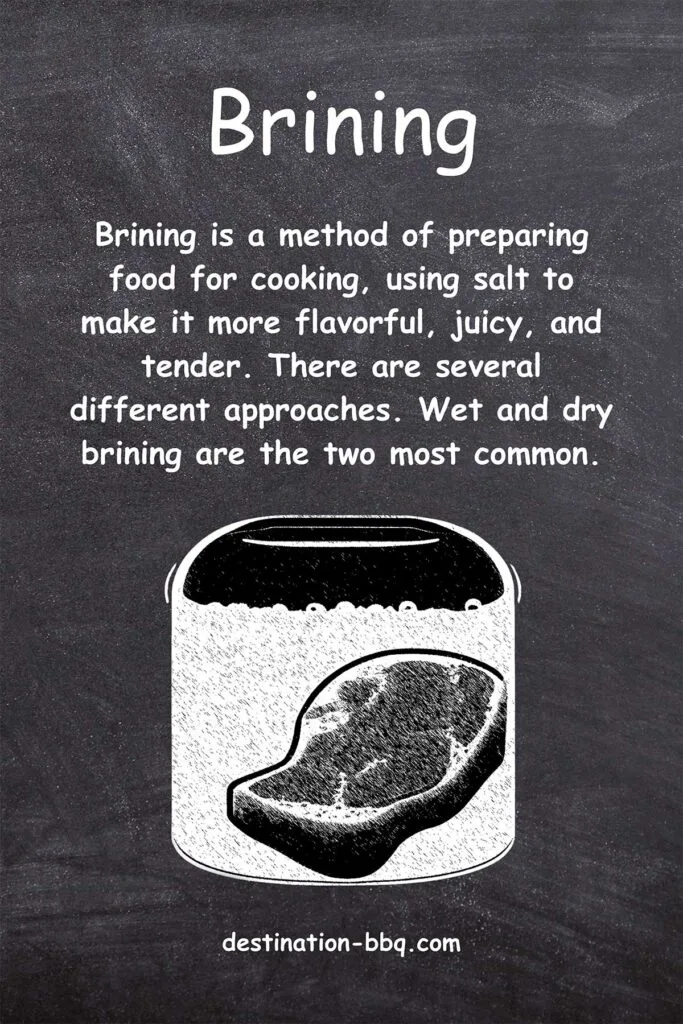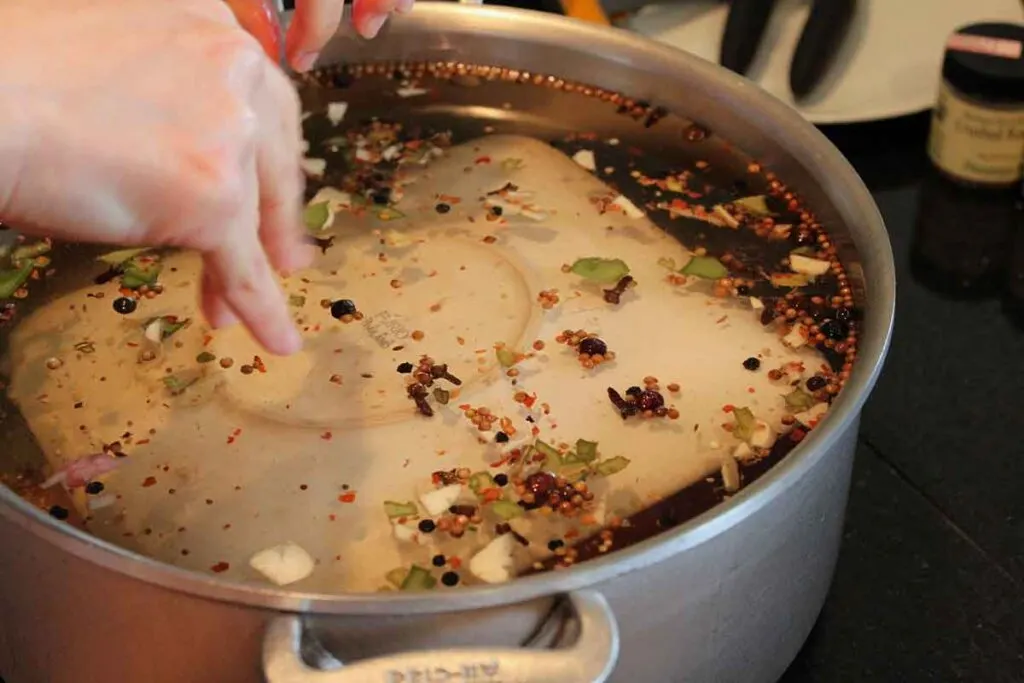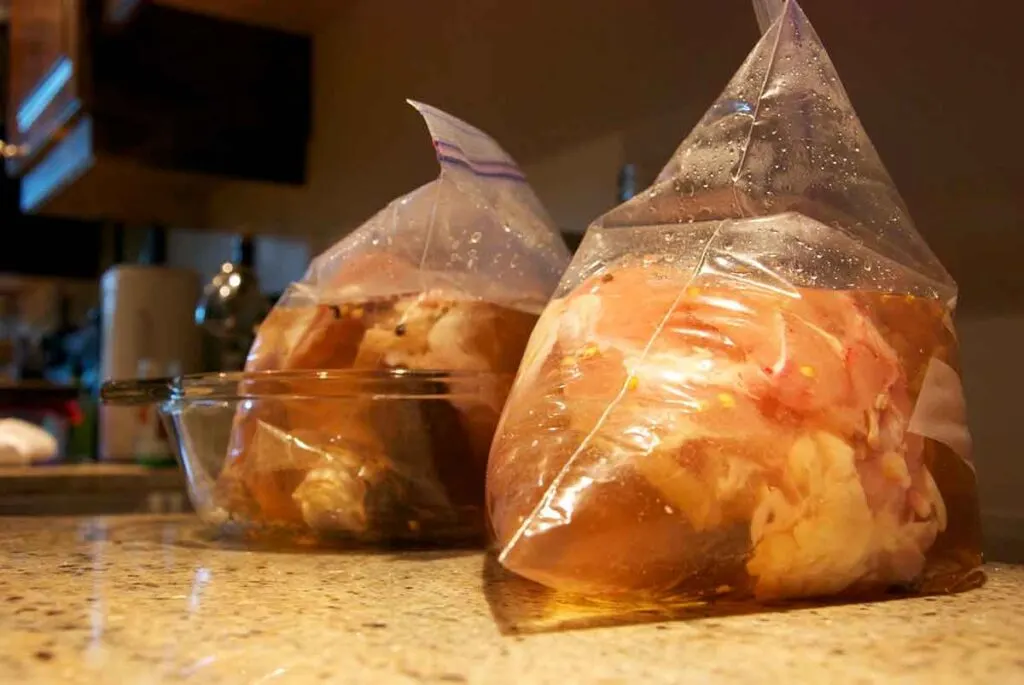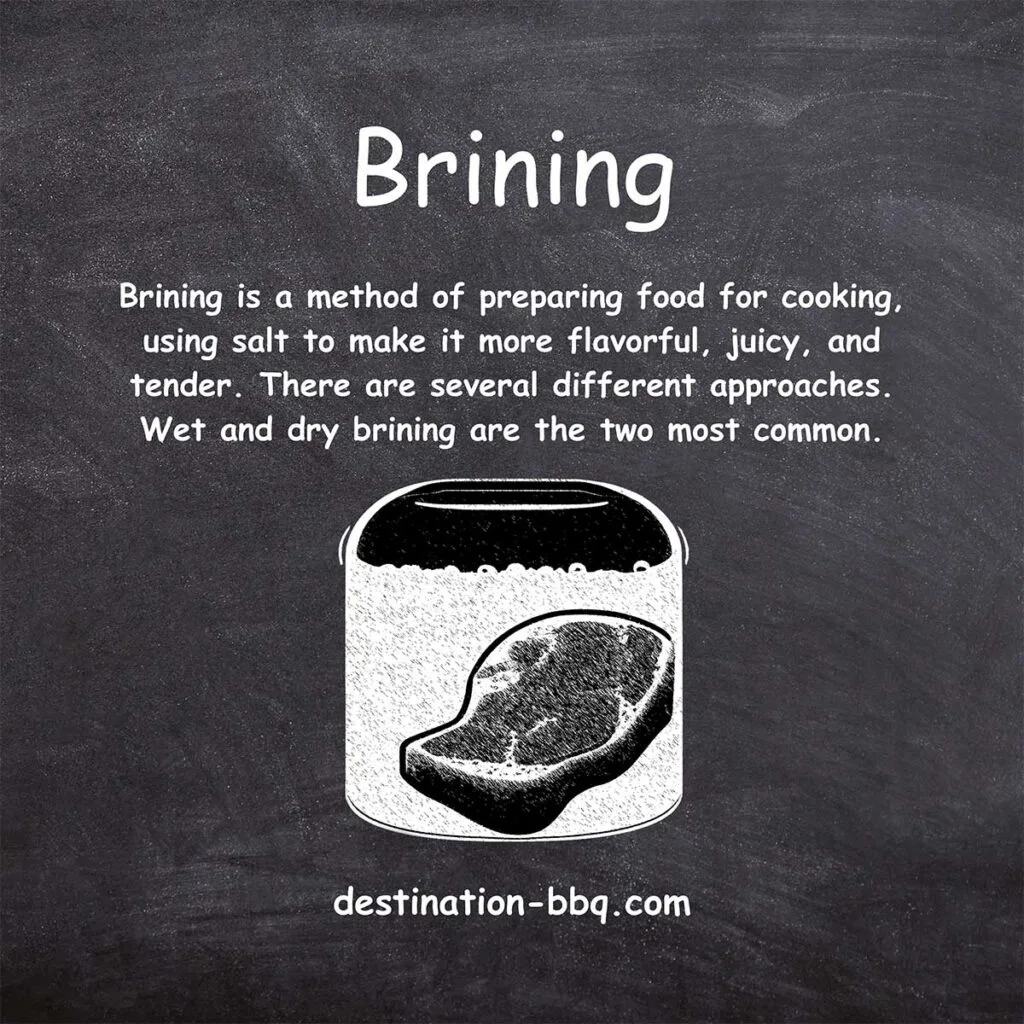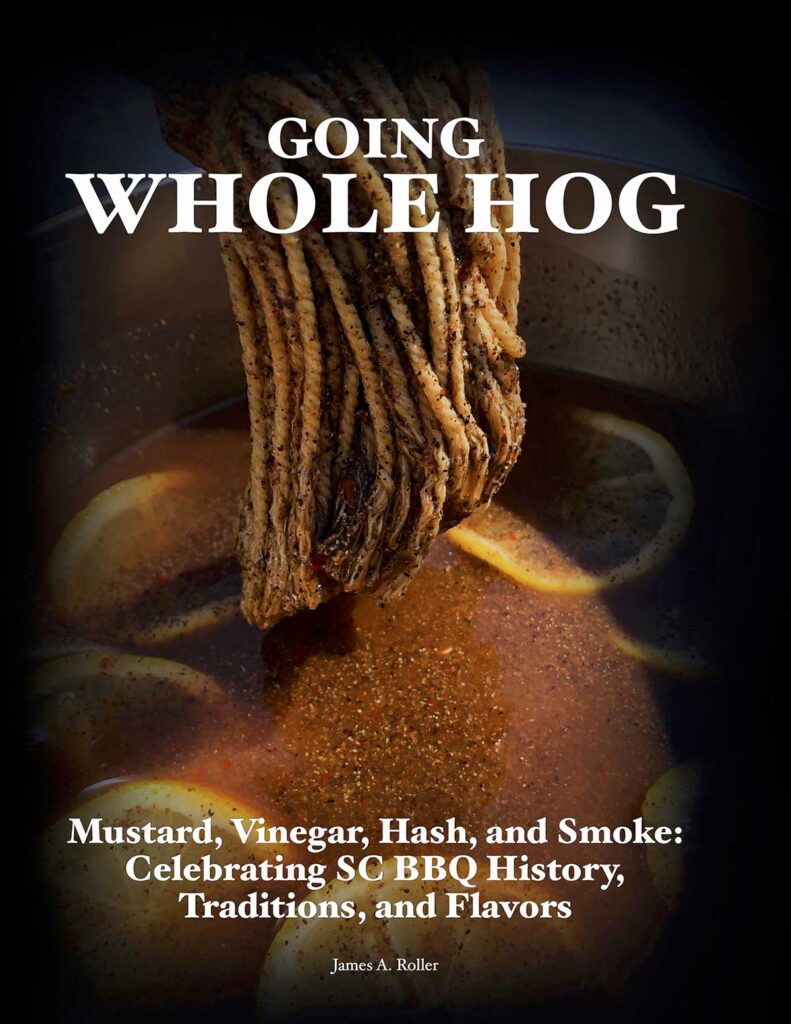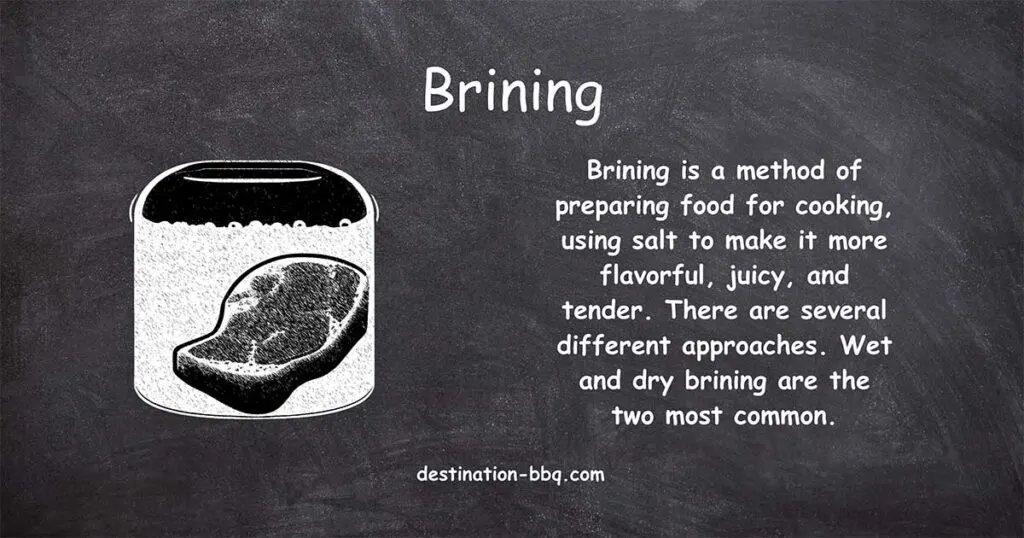
What is Brining?
Brining encompasses a range of techniques aimed at enhancing the flavor, juiciness, and tenderness of food. These methods include wet brining, where the food is submerged in a saltwater solution; dry brining, where salt is directly applied to the surface of the food; injection brining, involving the injection of a marinade or brine deep into the meat; and equilibrium brining, which achieves precise seasoning and moisture retention through a carefully calculated salt-to-water ratio. Each method offers unique benefits and allows for customization to suit different ingredients and desired outcomes.
Key Takeaways
- Brining is a culinary technique that enhances the flavor, juiciness, and tenderness of food.
- There are various methods, including wet brining, dry brining, injection brining, and equilibrium brining, each offering unique benefits and allowing for customization based on ingredients and desired outcomes.
- Wet brining involves submerging the food in a saltwater solution, while dry brining applies salt directly to the surface of the food, injection brining injects marinade or brine into the meat, and equilibrium brining achieves precise seasoning and moisture retention through a calculated salt-to-water ratio.
- Brining can be used not only for meat but also for vegetables, seafood, and tofu, expanding the flavor possibilities in cooking.
When it comes to keeping foods moist on a smoker or grill, few techniques rival brining. A soak in a saline solution makes turkeys tender and succulent and pork chops plump and moist. Add a curing salt and brine gives pastrami its pinkish color and poultry or ham its umami richness.
Steven Raichlen, Barbecue Bible
Understanding Brining
Imagine succulent roast chicken with tender meat that practically melts in your mouth, its flavors infused with aromatic herbs and spices. Or picture sinking your teeth into a juicy, grilled steak with a delectable crust that adds a satisfying crunch to every bite. What’s the secret behind these culinary delights? It’s all about the transformative power of brining.
Brining, an age-old technique, has been cherished by cooks and chefs for centuries. With just a simple ingredient – salt – you can elevate the juiciness, tenderness, and flavor of various meats and other foods. But brining is not just about dousing your ingredients in a salty solution; it’s an art that requires understanding the science behind it.
In this article, we’ll dive into the world of brining, exploring the mysteries of its science while providing practical guidance on different methods. Whether you’re a seasoned chef or a home cook looking to enhance your culinary skills, there is something here for you.
By understanding the principles that underpin brining and exploring various techniques – from wet brining to dry brining, equilibrium brining to injection brining – you’ll gain the knowledge to transform your favorite cuts of meat into mouthwatering masterpieces.
But using a brine isn’t just for meat alone; we’ll also dive into its applications for vegetables, seafood, and even tofu, broadening your culinary horizons.
Brining – the secret to extraordinary flavor and moisture in your cooking.
The Science Behind Brining
To truly appreciate the magic of of this technique, we must first understand the science behind it. At its core, brining is a process that leverages the power of osmosis and diffusion to enhance the moisture and flavor retention of meat.
Osmosis vs. Diffusion
When it comes to brining, there are two processes at play: osmosis and diffusion. Let’s break them down in simple terms:
Diffusion: Imagine you have two containers—one filled with salty water (the brine) and the other with plain water (the meat). Diffusion is the process by which the salt molecules naturally move from an area of high concentration (the brine) to an area of low concentration (the meat).
It’s like when you open a bottle of perfume, and the scent spreads throughout the room. Similarly, the salt molecules in the brine move through the meat, equalizing the concentration of salt.
Osmosis: Osmosis is often associated with brining, but its role is not as significant as diffusion. Osmosis involves the movement of water molecules across a semi-permeable membrane (like the membranes surrounding meat cells). In the early stages of brining, water does come to the surface of the meat to dilute the salt.
Additionally, some salt ions can pass from cell membrane to cell membrane, increasing the pressure inside the cells. However, the amount of osmosis is relatively small, and sometimes osmotic pressure opposes the diffusion of salt ions into the meat.
Diffusion is the primary process at work when brining. Salt molecules move from the concentrated brine to the less concentrated meat, flavoring and seasoning the meat in the process.
Osmosis does have some involvement, but it is not the driving force behind it. The movement of water and salt ions through the meat via osmosis is relatively limited compared to the more significant diffusion process.
Effects: Moisture Retention
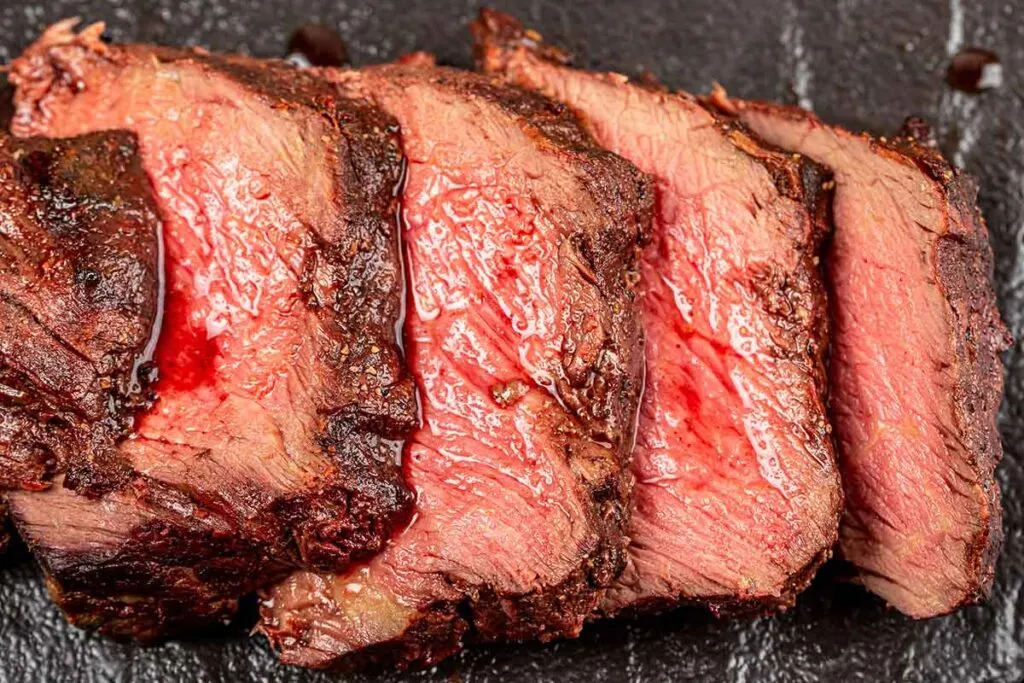
When we cook meat, moisture is lost through evaporation and the contraction of cells and connective tissues. This can result in dry, tough meat. However, by introducing salt into the equation, we can alter the behavior of meat proteins, such as myosin, to retain moisture more effectively during cooking.
“A saltwater solution creates a high-concentration environment, causing some of the protein structures in the meat to unwind and swell, allowing them to trap water,” writes Cook’s Illustrated.
Imagine the proteins in meat as complex, coiled structures. When salt, in the form of sodium and chloride ions, comes into contact with these proteins, it disrupts their structure.
This disruption allows the proteins to bind water more tightly, minimizing moisture loss and preserving juiciness. The result? A tender and succulent piece of meat that leaves your taste buds yearning for more.
According to Professor Greg Blonder, an advisor for AmazingRibs.com, when we brine meat, salt and moisture interact with proteins and muscle fibers, resulting in improved texture and flavor.
As Blonder explains, “When sodium and chloride ions get into the muscles, the electrical charges mess with the proteins, especially myosin, so they can hold onto moisture more tenaciously. As a result, less is lost during cooking.”
Cook’s Illustrated conducted a test comparing the weight loss of chicken soaked in plain water, chicken soaked in brine, and un-soaked chicken.
The brined chicken lost only 7% of its pre-soaked weight during cooking, while the un-soaked chicken lost 18% of its original weight. The brined chicken retained significantly more moisture, resulting in a juicier end product.
But brining isn’t just about moisture retention.
Flavor Enhancement
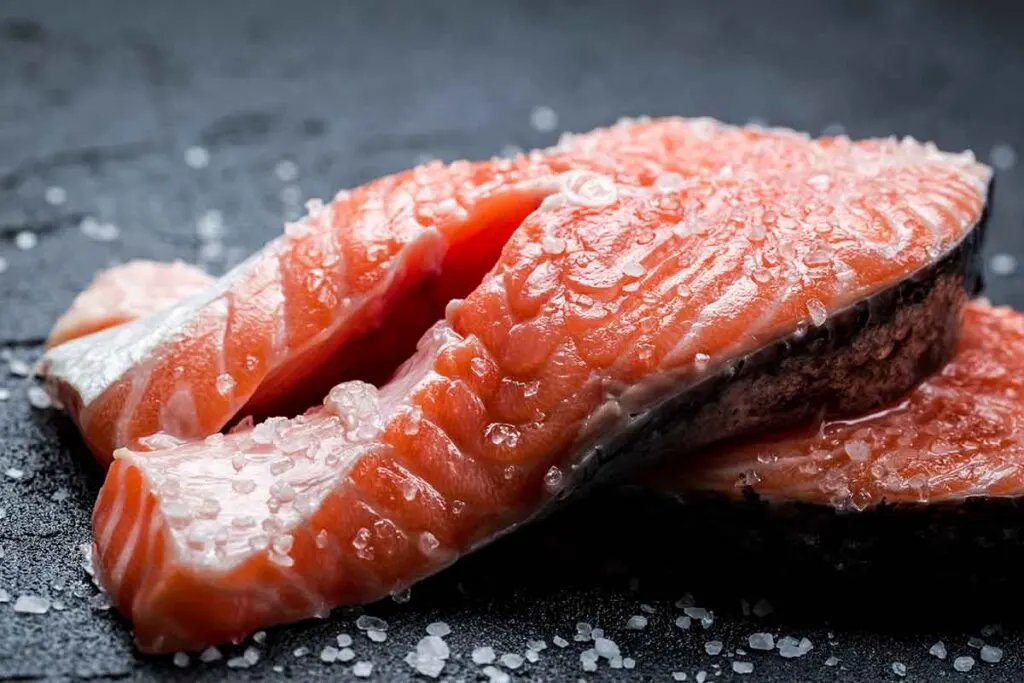
Salt acts as a flavor amplifier, enhancing the natural taste of meat and suppressing bitterness. It even expands your taste buds, making every bite more vibrant and satisfying. This flavor-enhancing effect permeates whatever you brine.
Meathead, publisher of Amazing Ribs, emphasizes this when he writes, “Salt…expands your taste buds. Many of us sprinkle salt on meat when it is served because it just makes meat taste better. Brining helps bring the benefits of salt to every bite, not just the surface.”
However, like any culinary technique, there is a delicate balance to strike. While salt is the key to unlocking the potential of your finished product, too much of it can be overwhelming and render the food unpleasant.
It’s crucial to find the right balance in your brine solution and ensure you don’t leave the meat submerged for excessive periods. Soaking for too long can lead to a pickling or curing effect, altering the texture and taste of the meat in undesirable ways.
In the next section, we’ll explore the various methods at your disposal, allowing you to choose the one that best suits your culinary ambitions. From wet to dry, equilibrium to injection, each technique offers unique benefits and considerations.
Brining Methods
There are various brining methods to consider when preparing your meat. Each technique offers unique advantages and can be tailored to suit your preferences and the specific dish you’re preparing. Let’s explore some popular methods and how they can elevate your culinary creations.
Wet Brining
This style is what most people think of when it comes to brining. It is simply the technique of submerging meat in a saltwater solution. That solution often contains additional flavorings, but the primary ingredients are water and salt.
This techinique can be seen in the recipe for chicken wings by Home Team BBQ and also in this homemade bacon recipe by Chef Anthony Gray.
Steps for Wet Brining:
- Choose your meat: This method works well for poultry (such as chicken or turkey breasts) and lean cuts of meat (like pork loin chops). Keep in mind that meats already treated with a brine solution or labeled as “enhanced” or “self-basting” should not be wet brined, as they may become too salty.
- Prepare the brine solution: In a non-reactive container (such as a food-grade plastic or glass container), combine water and salt to create the brine solution. The ratio of salt to water is typically 5-10% salt by weight. For example, for every gallon (3.8 liters) of water, you would use 1/2 to 1 cup (115-230 grams) of salt. You can also add other flavorings like sugar, herbs, spices, or aromatics if desired.
- Dissolve the salt: Stir the brine solution until the salt is completely dissolved. If you’re using coarse salt, it may take a bit more time and stirring.
- Add the meat: Place the meat into the brine solution, ensuring that it is fully submerged. If necessary, you can weigh it down with a plate or other heavy object to keep it submerged. If you’re soaking a whole turkey, consider using a large food-grade plastic bag or a brining bag that can accommodate the size of the bird.
- Refrigerate and soak: Place the container with the meat and brine in the refrigerator. The meat should soak in the brine for an appropriate amount of time based on its thickness and the desired level of flavor and moisture enhancement. As a general guideline, brine poultry for 1-2 hours per pound (2-4 hours per kilogram) and pork loin chops for 1 hour per inch (2.5 centimeters) of thickness.
- Remove and rinse: Once the brining time is complete, carefully remove the meat from the brine solution. Rinse the meat thoroughly under cold running water to remove any excess salt from the surface. This step helps prevent the meat from being too salty when cooked.
- Pat dry: Gently pat the meat dry with paper towels to remove excess moisture. This step is important for achieving crispy skin on poultry or a good sear on other meats.
- Cook as desired: Proceed to cook the brined meat according to your preferred recipe. Wet brining enhances flavor, moisture, and tenderness, so you can expect juicy and flavorful results. Adjust the cooking time and temperature as needed based on your recipe’s instructions.
Remember, wet brining requires planning ahead to allow for sufficient brining time and proper refrigeration. The process may vary slightly depending on the specific recipe and meat you’re working with, so it’s always a good idea to consult the recipe or guidelines for the best results.
Dry Brining
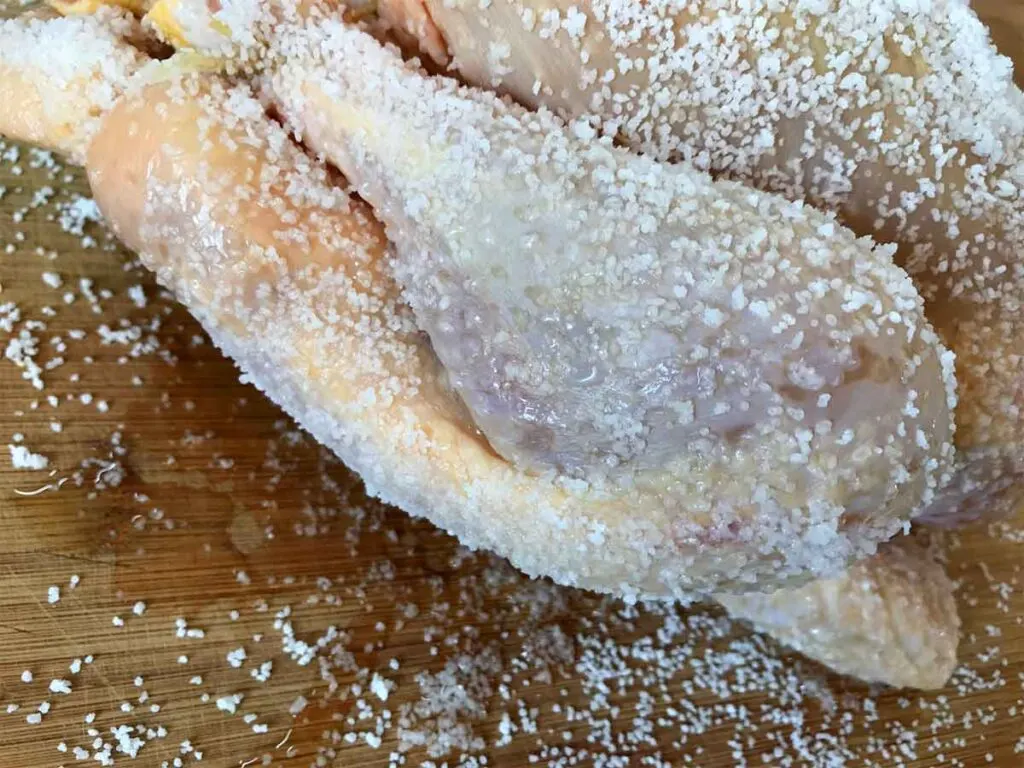
Lexlex, CC BY-SA 4.0, via Wikimedia Commons
Dry brining has gained popularity for its ability to enhance the flavor and juiciness of meat without the need for a liquid brine. Unlike wet brining, this approach relies on the simple application of salt directly onto the surface of the meat. This method not only seasons the meat but also helps to improve its texture and tenderness.
Steps for Dry Brining:
- Choose the meat: Select the cut of meat you want to dry brine. This technique works well with various meats, such as poultry, pork, beef, and even fish.
- Prep the meat: Before applying the salt, ensure that the meat is properly prepared. Trim any excess fat or undesirable parts, and pat the meat dry with paper towels. This step helps to ensure better salt adhesion and browning.
- Season with salt: Generously sprinkle kosher salt or a coarse sea salt over all sides of the meat. Make sure to cover the entire surface evenly, but not excessively. The salt will draw out moisture, season the meat, and enhance its flavor.
- Optional: Add other seasonings or spices: If desired, you can enhance the flavor of the meat further by incorporating additional herbs, spices, or aromatics along with the salt. This step allows for customization based on your taste preferences and the intended flavor profile.
- Rest in the refrigerator: Once the salt is applied, place the meat on a wire rack set on a baking sheet or a plate. This setup allows air circulation and prevents the meat from sitting in its released juices. Transfer the meat to the refrigerator, uncovered, and let it rest for a specific period, depending on the size and type of meat.
- For smaller cuts (such as chicken pieces or steaks): Rest for at least 1 to 2 hours.
- For larger cuts (such as whole poultry or roasts): Rest overnight, or up to 24-48 hours for maximum flavor penetration.
- Rinse or wipe off excess salt (optional): After the recommended resting time, you can choose to rinse off the excess salt from the meat or gently wipe it off with a damp cloth. This step helps to control the saltiness, especially if you find the meat to be overly seasoned. However, it’s important to note that rinsing or wiping may slightly reduce the flavor enhancement achieved through dry brining.
- Air-dry (optional): For an extra step that aids in developing a crispy and flavorful crust, you can let the meat air-dry in the refrigerator, uncovered, for a few hours or overnight before cooking. This allows the surface to dry out slightly, promoting better browning and texture.
- Cook as desired: Proceed with your preferred cooking method, whether it’s grilling, roasting, pan-searing, or any other technique suitable for the specific meat. Dry-brined meat typically requires less additional seasoning, as the salt has already imparted flavor throughout the meat.
By following these steps, you can enjoy the benefits of dry brining—a technique that enhances the flavor, tenderness, and juiciness of your favorite cuts of meat. Experiment with different meats, seasonings, and resting times to discover your perfect dry-brining approach.
Other Techniques
While wet and dry are the two most popular approaches, there are two other techniques that can be used. Two less common methods are injection brining and equilibrium brining. Each technique offers unique advantages and allows for precise control over the brine’s impact on the meat. Whether you’re looking to infuse flavor deep into the meat or achieve a perfectly balanced seasoning, understanding these brining methods will give you options.
Injection Brining
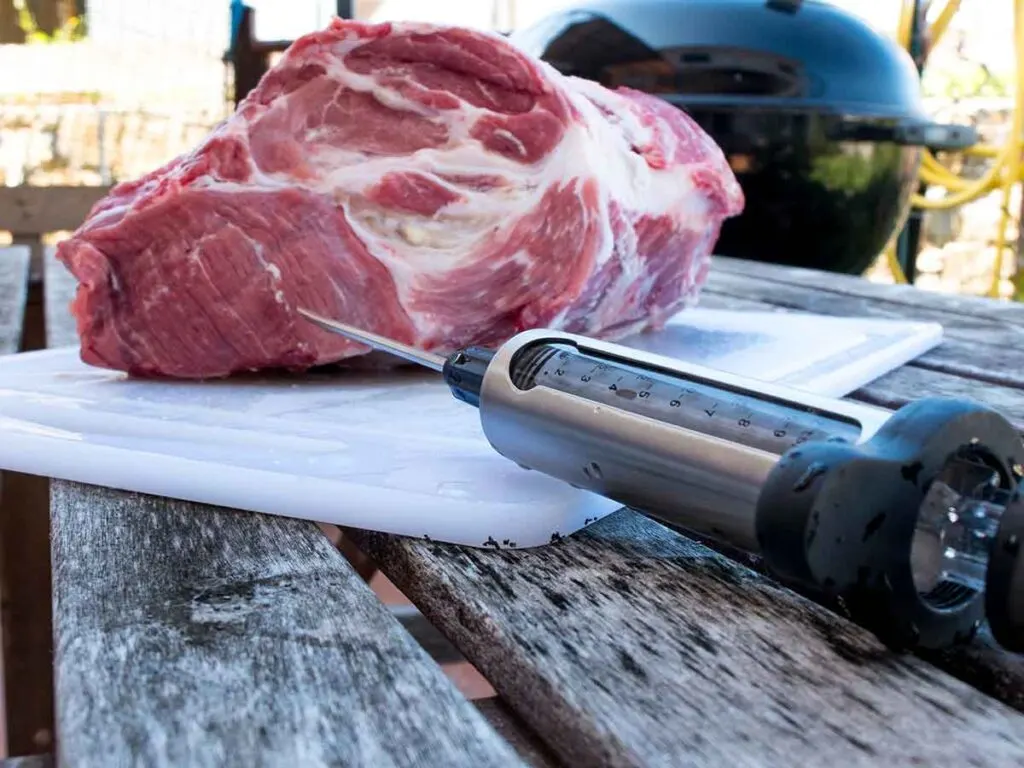
The injection method is a way of infusing flavor and moisture by injecting a marinade or brine directly into the meat. It’s ideal for larger cuts like whole poultry or roasts, ensuring deep flavor penetration.
For this brining method, you’ll need the right tool. We recommend this meat injector by Cave Tools because of its sturdy construction.
Here’s a quick explanation of how to use injection:
Steps for Injection Brining:
- Prepare the injection solution with your desired flavors and seasonings.
- Choose a meat injector or flavor injector syringe as your injection tool.
- Inject the solution into the meat, spacing the injections evenly for uniform distribution.
- Control the amount of injection based on the meat’s size and type.
- Gently massage the meat to distribute the injected solution evenly.
- Let the meat rest for about 30 minutes to an hour.
- Proceed with your preferred cooking method to enjoy moist and flavorful results.
Remember to follow food safety guidelines and ensure cleanliness during the injection process. Injection brining enhances the taste and tenderness of your meat, offering endless flavor possibilities.
Equilibrium Brining

Equilibrium brining is a method that allows you to achieve precise and consistent results. Unlike traditional methods where a specific brine concentration is used, equilibrium brining involves a careful calculation of the salt and water ratio to achieve the desired level of seasoning and moisture retention.
To try this approach, you’ll need a reliable scale capable of handling significant weight. We use the OXO Good Grips 11 pound food scale. If working with something heavier, you may need to weigh the water and meat separately to make your calculations.
Here’s a quick explanation of this method:
Steps for Equilibrium Brining:
- Calculate the correct salt percentage for your brine based on the weight of the meat.
- Prepare a brine solution by dissolving the calculated amount of salt in water.
- Place the meat and the brine solution in a suitable container or food-grade plastic bag.
- Ensure the meat is fully submerged in the brine.
- Seal the container or bag and refrigerate.
- Allow the meat to brine for an extended period, typically 24 to 48 hours, depending on the size and type of meat.
- During the brining process, osmosis equalizes the salt concentration inside and outside the meat, resulting in a balanced and flavorful outcome.
- After brining, remove the meat from the brine and rinse it thoroughly to remove excess salt.
- Pat the meat dry with paper towels before proceeding with your preferred cooking method.
Equilibrium brining allows for controlled and consistent seasoning throughout the meat, ensuring a well-balanced flavor profile and enhanced juiciness. It’s a technique that requires planning and patience but rewards you with delicious and perfectly brined results.
Beyond Meat: Vegetables, Seafood, and Tofu
Brining is not limited to meat alone. This versatile technique can also be applied to vegetables, seafood, and even tofu, unlocking a world of flavor possibilities for plant-based and seafood dishes. By harnessing the power of this technique, you can enhance the taste, texture, and moisture retention of a variety of ingredients, creating delectable and satisfying dishes that are sure to impress.
Let’s delve into how brining can be adapted for vegetables, seafood, and tofu.
Vegetables
Brining vegetables can add complexity and depth to their natural flavors while helping to maintain their crispness and texture. The process is similar to meat brining but with shorter brining times.
Here’s a basic guideline:
- Select your vegetables: Choose firm and fresh vegetables such as cucumbers, radishes, carrots, or green beans.
- Prepare the brine: Dissolve salt and sugar in water, adding aromatics like herbs, spices, or citrus zest if desired.
- Submerge the vegetables: Place the vegetables in the brine and ensure they are fully submerged. You can use a weighted plate or a zip-lock bag filled with brine to keep them immersed.
- Brine for the appropriate time: Brining times for vegetables are shorter, usually ranging from 15 minutes to a few hours, depending on the desired flavor intensity and texture.
- Rinse and pat dry: After brining, remove the vegetables from the brine and rinse them thoroughly under cold water. Pat them dry before incorporating them into your recipes.
Seafood
Brining seafood, such as fish or shrimp, can enhance their moisture, tenderness, and flavor. The process helps to minimize moisture loss during cooking, resulting in juicy and succulent seafood dishes.
Here’s a simple approach:
- Choose your seafood: Opt for fresh and high-quality seafood, whether it’s fish fillets, shrimp, or scallops.
- Create the brine: Mix salt, sugar, and any desired seasonings in water, creating a flavorful brine solution.
- Submerge the seafood: Place the seafood in the brine, ensuring it is fully covered. You can use a shallow dish or a resealable bag for this purpose.
- Brine for the recommended time: Brining times for seafood may vary depending on the size and type of seafood. Generally, smaller cuts require shorter brining periods, typically ranging from 15 minutes to an hour.
- Rinse and pat dry: Once the brining time is complete, remove the seafood from the brine and rinse it under cold water. Gently pat it dry before proceeding with your preferred cooking method.
Tofu
Brining tofu can transform its texture and infuse it with delightful flavors. The process helps the tofu to absorb seasonings, resulting in a more pronounced taste and improved mouthfeel.
Here’s a quick guide:
- Select your tofu: Choose firm or extra-firm tofu, as it holds its shape better during the process.
- Prepare the brine: Dissolve salt, sugar, and other desired seasonings in water, creating a flavorful brine solution.
- Submerge the tofu: Place the tofu in the brine, ensuring it is fully immersed. You can use a shallow dish or a resealable bag for this purpose.
- Brine for the desired time: Brining times for tofu can vary, ranging from 15 minutes to several hours, depending on the desired flavor intensity and texture.
- Remove and pat dry: Once the brining time is complete, remove the tofu from the brine and gently pat it dry with paper towels. This step helps remove excess moisture and promotes better browning and texture when cooking.
- Cook the tofu: Proceed with your desired cooking method, such as grilling, baking, stir-frying, or pan-searing. The brined tofu will have absorbed the flavors of the brine, resulting in a more flavorful and well-seasoned final dish.
Final Words
Brining is a technique that has the power to elevate the flavors, textures, and juiciness of various foods. Whether you’re brining meats, vegetables, seafood, or tofu, the principles remain the same—immersing the food in a saltwater solution to enhance its taste and moisture retention. Other methods have their own advantages.
By understanding the science behind it all and exploring different methods, you can take your grilling to new heights and create mouthwatering dishes that will impress family and friends. So, next time you step into the kitchen, consider incorporating the art of brining and unlock a world of delicious possibilities.
